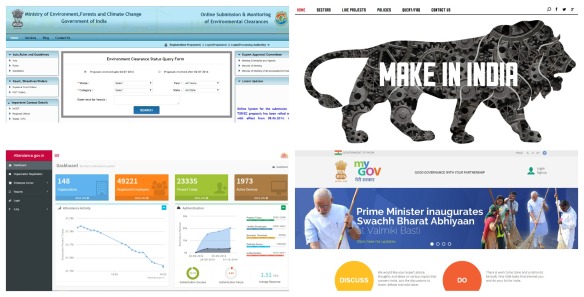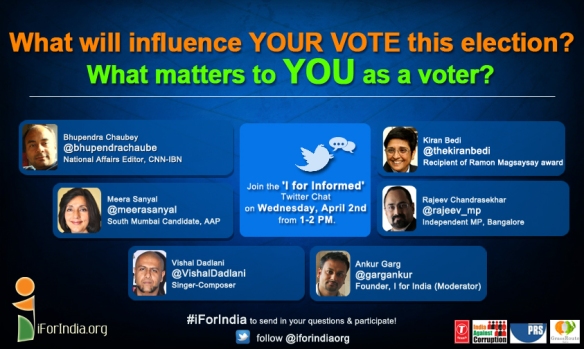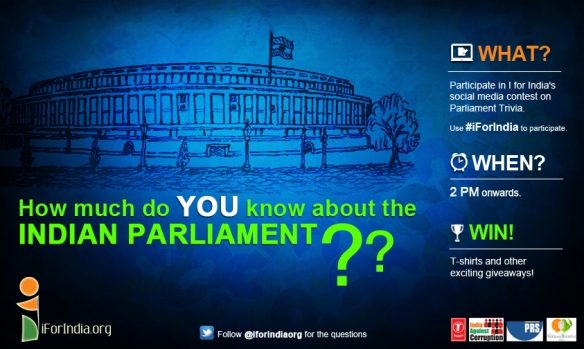The Prime Minister is looking to leverage the digital means to reach out to the masses and advertise his initiatives in a way that no other political leader has done in India’s history, while ensuring more transparency and accountability in both the bureaucracy and the government through the same means.
There were a lot of things that contributed to Modi’s rise in national politics and his immense popularity amongst the masses. While Congress leaders – when in power-were reluctant to even talk to media and citizens regularly, Modi used both the Social Media and the Internet extensively to connect to the masses. In the run-up to the Lok Sabha Elections as he toured the country and made speeches, a dedicated team of technocrats, IIT/IIM/Ivy-league graduates and others mined data, produced media talking points and worked tirelessly on the online outreach to help create the Modi wave.
Modi, the most followed leader after the likes of the Pope and Obama, now aims to leverage the same means and platforms to spread his message of ‘Good Governance’ and include the everyday citizens of the country in decision-making and the larger discourse around governance by asking for their feedback and inputs. For a country that witnessed the government’s disinterest in making any effort to communicate with the public, this is a much-needed change. Democratic set-ups works best with the regular engagement of the government with the public. This not only ensures more accountability and transparency, but also keeps the citizens updated with the government’s work and progress.
As a country with the largest young population, the government has to move beyond the traditional methods of press releases, wire transmissions and press conferences to reach out to the citizens. An impetus on digital governance will not only ease the process of communication with the government but also facilitate the larger need of inclusive democracy to compile suggestions and feedback by the citizens – something that the conventional media may not be able to do as efficiently and regularly.
Although the current PM’s efforts towards digital governance are commendable, the current government should not be credited for all the efforts towards digital governance. Previous governments, recognizing the need to facilitate access to government data through digital means, have successfully instituted forums like data.gov.in – a single-point access to data published by the various Government Ministries/Departments. Through this website, one can access the census data and crime statistics to employment generated through schemes like NREGA, along with relevant visuals and maps. Additionally, the National E-Governance Plan (NeGP), makes sure that the government keeps harnessing the power of E-Governance in delivering public services to the citizens.
Ever since Modi shifted from Gandhi Nagar to 7, Race Course, he has made sure every move taken by his government has been communicated to the citizens and continues to use the online media, as evident from his live streaming of Teachers’ Day Address and the address to the UN General Assembly, his Tweets to Foreign Leaders et cetera . Here are some of the steps that PM Modi has taken to promote Digital Governance.
Online presence and promotion of government initiatives
When was the last time you saw a government scheme trending on Twitter? Or, a state-of-the-art website for government campaigns. Modi knows how to package government schemes and programmes, right from his days at the Vibrant Gujarat campaign. Three months into the new government and all the programmes undertaken by the new government–‘PradhanMantri Jan DhanYojna’ ‘Make in India’, ‘Clean India’ – have had an incredible digital outreach and presence. While ‘Make in India’ was launched with an impressive website, both the ‘Jan DhanYojna’ and ‘Clean India’created as much buzz on the internet as they did on news channels. Most recently, the PM smartly adapted the ‘Ice Bucket’ and ‘Book List Challenge’ to promote his ‘Clean India Campaign’by nominating 9 influential people to participate in, and further promote his campaign.
One of Modi’s primary initiatives and a reference in almost all his speeches and addresses, MyGov.in is a ‘citizen-centric platform that empowers people to connect with the Government and contribute towards good governance’. From asking for suggestions on issues such as Clean Ganga, Girl Child Education, Skill Development, and Job Creation to generic suggestions, MyGov aims to reach out to more than 10 million people, over the period of next one year . Apart from the reasons of engaging with the public as argued above, MyGov will surely go a long way in ameliorating the disenchantment people feel towards politics, by giving them a voice in governance through MyGov
Encouraging politicians to increase their online presence to reach out to the citizens
Contrary to his reputation now, post Gujarat riots Modi wasn’t really a darling of the media. Most media outlets portrayed him as an incompetent leader who failed to control the riots. To counter the damage done to his reputation, Modi started using social media and the internet to reach out to his people. From Blogs and Facebook Feeds to Google Hangout, he has made sure his presence was felt and people reached out to him, making him come across as an accessible and concerned leader. Almost every important cabinet minister in his government is on Twitter and Facebook, speaking directly to the citizens without any facilitation from the media.
Fighting red-tape
While Modi’s move to de-regularize and expedite the process of sanctioning environment clearances to projects is something that is debatable, he has sent out a clear message to the industry about his intent to fight red-tape and the bureaucracy that the government is infamous for. Now one can track the clearance of projects throughout the country on www.environmentclearnces.nic.in.
Since obtaining government clearances and project bidding processes have traditionally functioned in a near-black-box manner, resulting in the various scams and scandals, such steps will go a long way in making the environment more business friendly and instilling the industry’s and investors’ confidence in a more expeditious and transparent government. Hopefully this will be soon matched by most government departments and will not just remain restricted to the Ministry of Environment.
In a much needed move, the government has launched a website to track the attendance of the government employees- www.attendance.gov.in. Based on a Biometric Attendance System, the Attendance IDs of employees are generated through their Aadhar No. For a country whose government offices and bureaucracy are marred by the presence of inefficient pan-chewing ‘babus’ this comes as a great tool to track and review their attendance of the employees- no proxy attendance anymore.
The FlipSide- the need to move beyond virtual virtuousness and PR exercises
Image matters a lot to Modi. From appropriating the likes of Gandhi, SardarPatel and Vivekanand to stressing on the importance of the issues faced by the poor, Modi makes a conscious effort to style his image, his messages and the way he is perceived by the masses.
All these campaigns must be used to empower and involve the people rather than to blow the government’s trumpet. This is a very valid concern since many politicians, from the likes of Akhilesh Yadav to Ashok Chavan and Raman Singh, are spending crores of tax-payer’s rupees to advertise their initiatives on the internet (A Supreme Court report recently rebuked the Governments for spending tax-payers’ money in wasteful newspaper ads ), while poor people continue to suffer from basic needs. Add to that the dangers of Internet Activism- where the position of ‘armchair activists’ is open to all. In the age of #bringbackourgirls, #Mission272+ and #cleanindia, making a difference seems easy- a tweet or a share is all it takes for one to feel content on having performed one’s duty in bringing about a positive change. We need a contribution deeper than a click- an active and involved citizenry that is empowered through digital means but is willing to take action when needed.
Modi needs to make sure his initiatives end up being more than just token initiatives and symbolic gestures. For example, it is commendable to ask a billion plus people to take the broom, but the ‘Swach Bharat Abhiyaan’ without adequate municipal waste management infrastructure will be rendered useless. The government needs to make sure that it provides and develops supporting infrastructure to ensure the implementation of its schemes. All these initiatives and campaigns must not be treated like election promises which catch the popular imagination for a fix duration of time. For governments to build on from the excitement and enthusiasm that the public have shown for some of the recent initiatives, the government has to both monitor and manage these initiatives in a way that they actually contribute to the country, and don’t end up as just an old scheme packaged differently by the new government.
–
Chitranshu Tewari is Engagement and Outreach Manager at I for India.



